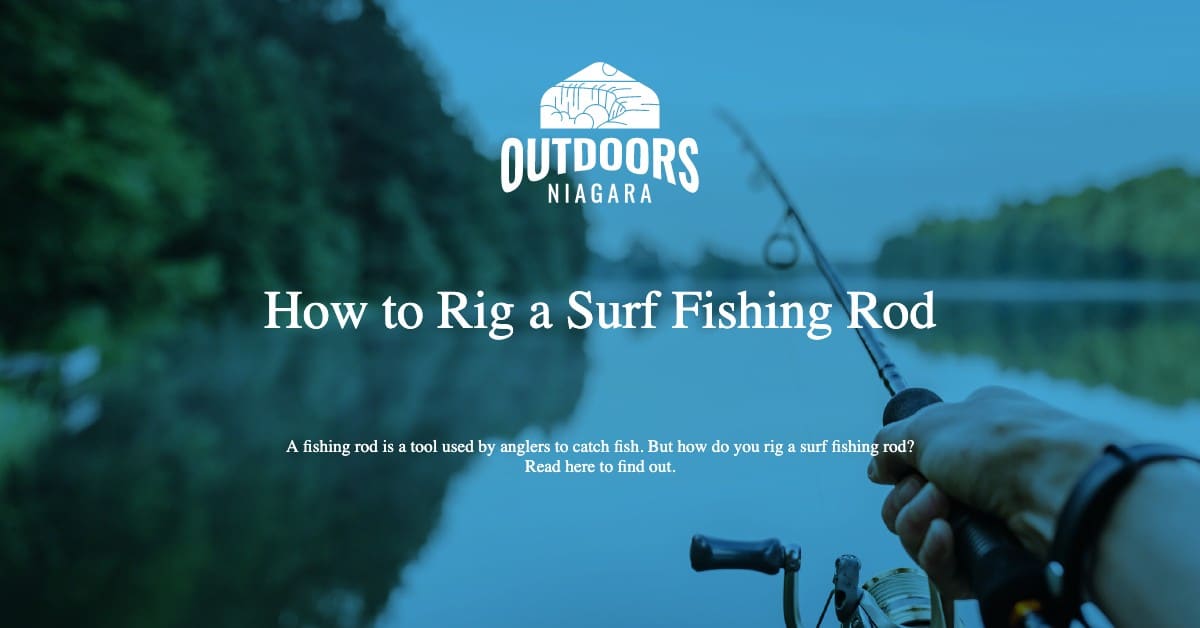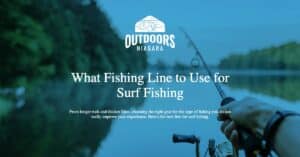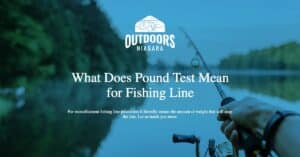A fishing rod is a tool used by anglers to catch fish.
It is a long, thin stick used to manipulate a fishing line, and the fishing line always ends in a hook.
A fishing rod is, in its most simple form, a stiff, straight stick with a line tied to one end.
Modern rods, on the other hand, are typically elastic, and they usually have the line kept in a reel mounted at the rod handle that is hand-cranked and controls the retrieval of the line.
Additionally, multiple line-restricting rings distribute bending stress along the rod and help dampen/prevent line whipping and entanglement.
The hooks attached to the line are dressed with baits or lures, and a bite indicator is employed to know when the fish bites the lure.
The manufacturers may build some of the indicators into the rod to tempt fish further.
This is basically how a fishing rod is used.
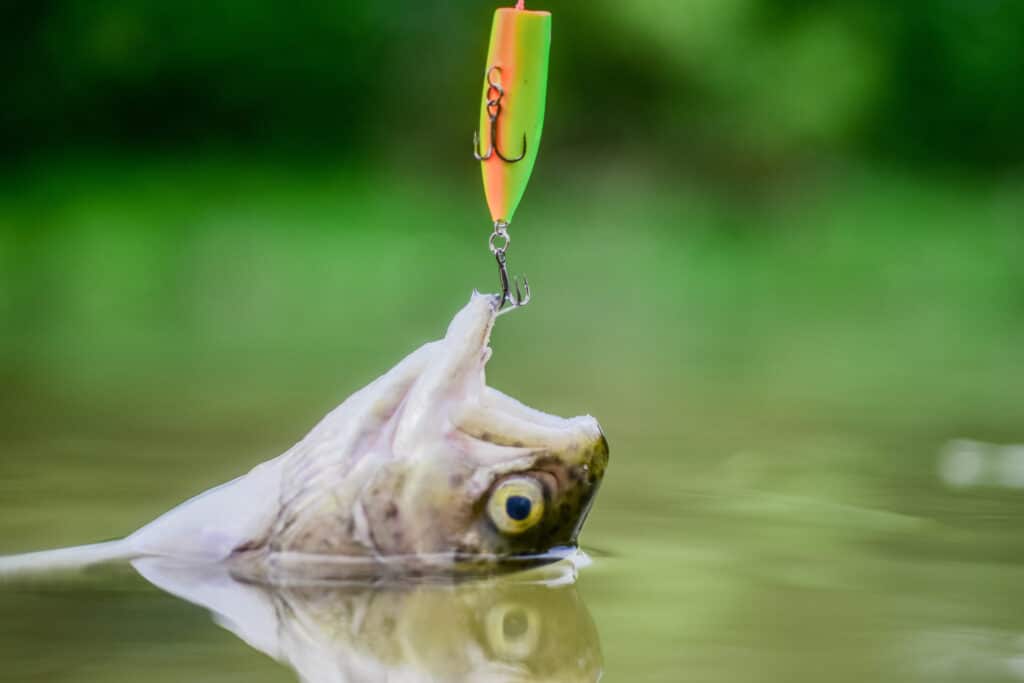
Contents
Types of Fishing Rods
Fishing rods come in various designs, each intended to carry out a certain function.
They are utilized for various fishing techniques, locales, and fish types.
While some rods are short and hard to resist the stresses of heavy-duty game fishing, others are long and elastic for casting.
Some examples include:
Telescopic Fishing Rods
Telescopic rods are intended to be the most compact rod possible.
You may stretch them, typically up to 20 feet from their closed length of one to two feet.
When fully extended, most telescopic rods have several eyes and a flexible tip that facilitates casting, resembling straightforward spinning rods.
Though it’s a very specialized rod, some telescopic rods lack eyes and instead direct the line via the middle of the rod.
Backcountry anglers, surf anglers, and anglers who prefer to have everything small and easy to travel with all use telescopic rods because they make it simple to fold up a very long rod for storage and transit.
Casting Fishing Rods
Casting rods enable the fisherman to place a lure or bait wherever they like.
Although they can be divided into two groups—bait casting rods and spin casting rods—the majority of contemporary rods are marketed as “casting rods” without any distinction.
The rod’s top is where the eyes are in both types.
With a forefinger trigger grip and typically smaller eyes, spin casting rods feature one larger eye closest to the spinning reel.
The only real difference between baitcasting rods is typical that the last eye nearest to the reel is slightly smaller because the line peels off a baitcasting reel differently.
Fly Fishing Rods
Fly rods are made expressly for fly fishing and are available in various sizes and forms.
They are often quite light and compact compared to other rods and are flexible to let you work the fly to and fro.
The smallest trout in tiny mountain streams to massive saltwater fish tuna are all targets of their various sizes.
It is a kind of fishing for a variety of species.
The absence of a butt part underneath the reel, which allows the angler to cast freely and quickly, is one of the distinguishing characteristics of a fly rod.
Additionally, they have unique eyes known as “snake eyes” that are made to direct heavy fly lines and avoid tangles when casting.
Due to their optimum flexibility and strength, carbon fiber composites are used to make the majority of modern fly rods.
Surf Fishing Rods
Although technically a form of sea rod, surf rods are widely used enough to merit their category.
They often have long butts that make it possible to cast a two-handed casting method with a hefty sinker and bait.
They can be used from the beach, rocks, or other shore objects and typically resemble a longer and heavier version of the spinning rod.
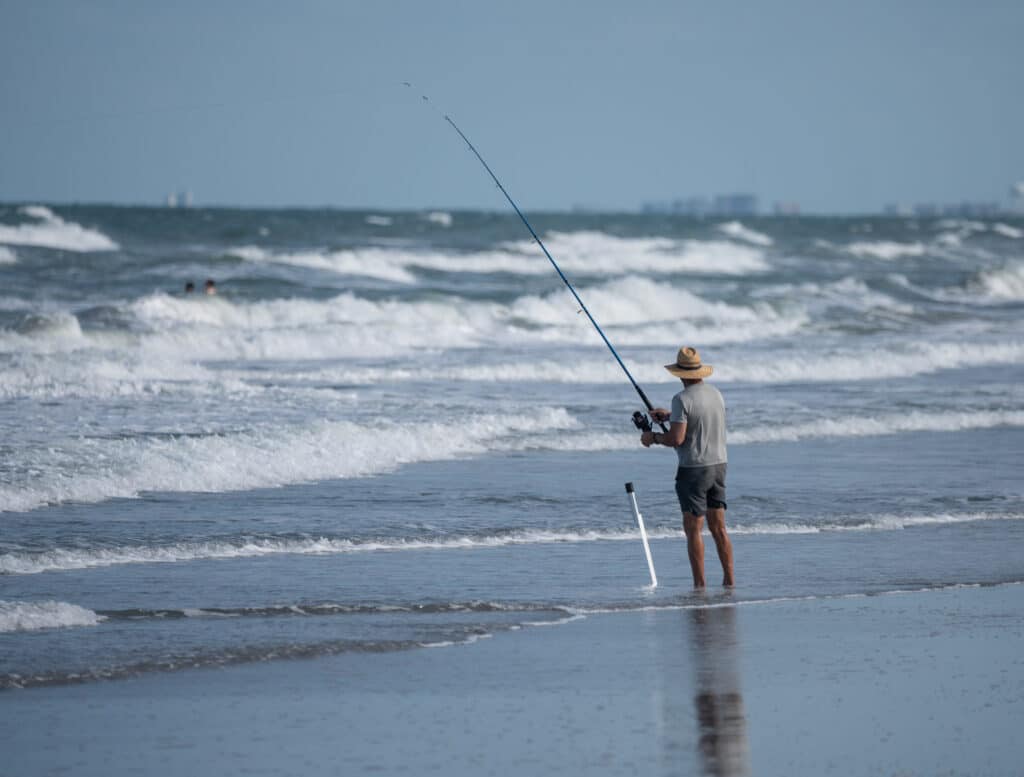
What Is Surf Fishing?
Surf fishing is game fishing on land while standing upon sand or wading into the surf.
Surf fishing is a broad phrase for all sorts of shore fishing, including those on rocky and sandy beaches, rock jetties, and fishing piers.
It may or may not involve casting a lure or bait.
How Do Surf Fishing Rods Differ
Compared to other fishing rods, surf rods are much larger.
Simply put, this is necessary to cast heavy lures to catch fish that are present in the surf.
Your rod must have sufficient height and strength to cast further than the waves breaking close to the coast.
In locations with calm water, an 8-foot surf rod will be effective; otherwise, go with a length of not less than 10 feet.
“Power” and “action” are other qualities of surf rods. Your rod’s power reflects its fortitude, while its motion reflects how “flexible” it is.
How To Rig A Surf Fishing Rod
There are different types of fishing rigs and this is informed by different factors, whether the kind of water (saltwater or freshwater), or whether it is a larger species you want to catch (experienced anglers know what is appropriate per time), these factors and more determine the type of fishing rigs to be used.
When fishing with natural bait, you can not go wrong as opposed to the difficulties you might encounter using artificial lures.
Buying natural, frozen bait is the most practical and accessible method of using it. It is the most effective lure.
However, fresh bait is best. Shrimp and squid are the most widely used and common frozen baits in the United States.
Frozen fish like mullet, bunker, and shad are also fairly common.
You must select a fishing “rig” based on the type of frozen bait you’re using.
Your hook, swivel, and weight are put together in a configuration known as a rig.
This is crucial because the proper fishing rigs will enable you to present your lure to fish in a way that will encourage them to bite.
By selecting the appropriate rig, you can be sure it’ll be a successful venture.
Use big fish finder rigs with big cut bait to go after fish over three feet, like striped bass, sharks, and bull-sized red drums.
An effective heavy setup is a fish finder rig with a sinker of 4 oz baited with a 2-inch thick slice of frozen fish, such as mullet, shad, or bunker.
Add a 2-inch foam float to the leader very few inches from the position of the hook if bottom feeders like toadfish or crabs are consistently eating your bait.
Alternatively, switch to a float rig.
A float rig will raise your bait from the bottom and keep it away from numerous crabs and other creatures that consume it before larger fish do in deeper water.
Sea trout, croaker, flounder, rockfish, and other varieties of perch are among the species you can catch using frozen shrimp and squid.
It would be best to keep fresh shrimp and squid rigs available because practically every species consumes these creatures.
Use a smaller fish finder rig with a pyramid sinker when you need to cast far.
Specialties like the bottom rig and the pompano rig are highly popular for smaller surf species.
As implied by the name, pompano and other fish of a similar size, such as spot, croaker, and perch, are the main targets of the pompano rig.
During high tide, cast this rig just where the initial wave (sometimes referred to as the “lip”) breaks.
On the other hand, the bottom rig is mostly constructed of wire and intended to be used in rocky bottoms and choppy surf. Use this rig carefully near piers, rocks, jetties, bridges, and inlets.
Conclusion
Rigging your surf fishing rod properly is one of the essential aspects of having an awesome time when you choose to go surf fishing.
The surf conditions also play a big role in how successful your expedition might be; however, it is imperative that your surf fishing rig is excellently done depending on the different species of fish you might want to catch.
Hopefully, this article has been a great help to you in that regard.

